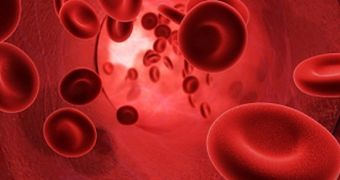Though it may seem counter intuitively at first, not all heart attacks are felt as they occur. In fact, it is estimated that roughly 30 percent of all such attacks go unnoticed, and without symptoms. Researchers are now working on ways of using blood to determine when such a heart event occurred.
Scientists at the Massachusetts Institute of Technology (MIT), in Cambridge, say that the bloodstream holds telltale indications that a heart attack has occurred for several days after the actual event.
Working in collaboration with colleagues from the Massachusetts General Hospital (MGH) Cardiovascular Research Center, the MIT experts have recently developed a new implantable device, that can be used to detect the signs left behind by “stealth” heart attacks.
The new device functions fairly simple. It is capable of monitoring the blood levels of three very important proteins, which are produced in larger quantities than average during a heart attack.
In a set of experiments the investigators conducted on unsuspecting lab mice, they showed that the implants are very effective at detecting when levels of the three proteins spike in the bloodstream.
While these devices are not for everybody, they could prove to be very useful for people who are known to have an elevated risk of experiencing a heart attack. If this happens, then doctors would know a lot faster than they do today.
They could then start administering treatments earlier than is possible today, which could contribute to increasing patients' overall chances of survival. This would also prevent more severe heart disease from developing.
Details of the new device, and the associated investigation, were published in the February 13 issue of the esteemed scientific journal Nature Biotechnology. The study was led by MIT professor of materials science and engineering Michael Cima, also the senior author of the research paper.
“If you go to the ER thinking you’ve had a heart attack, they take a blood sample and analyze it for these specific proteins. If you think about cancer, there aren’t generally agreed-upon markers,” Cima explains.
What's so interesting about this study is that the new device was constructed so that it can bind to and detect three biomarkers at the same time.
“This shows how generalizable this technique is,” says MGH Center for Molecular Imaging Research associate professor Lee Josephson, who was not a part of the research team.

 14 DAY TRIAL //
14 DAY TRIAL //